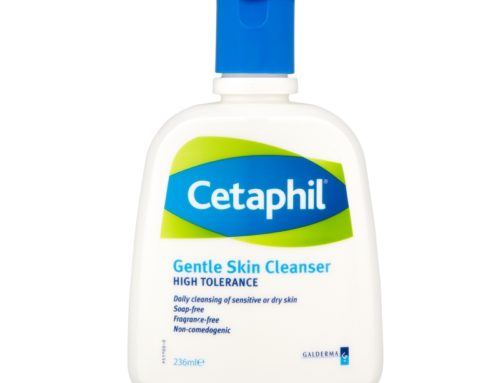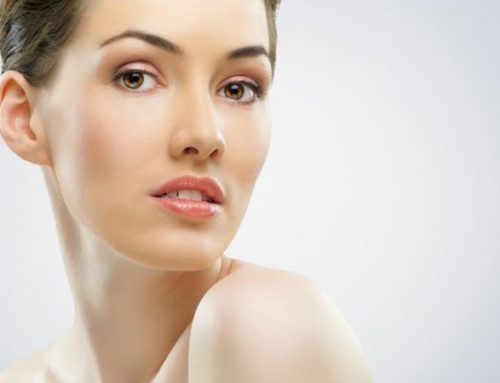Sweat and the Skin “The 3rd Kidney”
The skin is the largest organ in the body and makes up about 15% of total body weight. The skin, along with its derivatives, the sweat glands, oil glands, hair, and nails make up the integumentary system. It provides protection against physical, chemical, and biological damage from the external world, prevents excess water loss and plays a key role in regulating body temperature.
The skin is our first line of defense from external damage and the most visible organ we have. The skin is most often appreciated for its protective and sensory functions but also plays a vital role in elimination. The skin expels toxins and waste products through sweat. The skin’s eliminatory function is important for maintaining internal health and balance. All organs of elimination must be functioning to prevent any one of them from becoming overly taxed.
In this article we will lay out the skin’s structure and function and then delve into its role in detoxification as “the third kidney” alongside the kidneys and liver. We will also cover key factors that can influence the skin’s functioning, and signs of impaired skin elimination.
Functions of the Integumentary System:
- Protection: The skin protects internal tissues from various types of damage including; mechanical, chemical, ultraviolet radiation, biological, thermal, and desiccation.
- Temperature Regulation: The skin plays an important role in heat loss or retention with control from the nervous system.
- Elimination: The skin releases urea and uric acid though perspiration from the sweat glands.
- Synthesis of Vitamin D: The skin creates vitamin D with exposure to sunlight using modified cholesterol molecules.
- Sensation: The integumentary system is rich in sensory receptors that allow you to differentiate between heat, cold, touch, pressure, and pain.
Structure of the Skin
The skin is comprised of three layers: the epidermis, the dermis, and the subcutaneous tissue or hypodermis.
Epidermis
The epidermis is made of five different layers: Stratum basale, spinosum, granulosum, lucidum, and corneum. Similarly to other epithelial cells the epidermis has no blood supply. It is primarily comprised of keratinocytes. These cells produce keratin, the tough fibrous protein that makes the skin so effective as a protective organ against physical damage. The epidermis also contains melanocytes which contribute to skin tone.
Layers of the Epidermis
- Stratum basale: the deepest layer of the epidermis that is found closest to the dermis. This layer receives the most nourishment from the dermis via diffusion across the basement membrane. Melanocytes, the melanin producing cells that determine skin tone are also found in this layer.
- Stratum spinosum: The second deepest layer of the epidermis consists mainly of keratinocytes held together by proteins called desmosomes. This layer helps make the skin strong and flexible.
- Stratum granulosum: The cells in this layer are still diamond shaped but begin flattening and are more densely dominated by keratin. Still semi-living cells.
- Stratum lucidum: A clear layer of dead cells that only occurs in thick hairless regions of the skin such as the palms of the hands and the soles of the feet.
- Stratum corneum: The outermost layer of the skin. This layer is 20-30 cells thick. The cells lack nuclei, are flattened and full of keratin which allows it to withstand rough treatment. The stratum corneum makes up most of the thickness of the epidermis. The outermost layer of the skin is continually flaking off to be replaced by new cells from the stratum basale.
Dermis
The dermis is primarily made up of connective tissue and contains vasculature and nerves. The thickness of the dermis varies across the body and determines the thickness of the skin in each area. The dermis maintains homeostasis, thermoregulation, and provides nutrition to the epidermis through diffusion across the basement membrane.
The dermis is made up of two layers; the papillary dermis and the reticular dermis
Papillary Dermis: The papillary dermis contains dermal papillae which are projections that stick into the epidermis and have blood vessels, nerve endings, and touch receptors. It is a loose tissue.
Reticular Dermis: The reticular dermis is made up of much thicker connective tissue. This layer contains lots of collagen fibers which keeps the skin hydrated. This layer makes up 80% of the thickness of the dermis. It also contains blood vessels, oil glands, sweat glands, and deep pressure receptors.
Hypodermis
The hypodermis, also known as the subcutaneous tissue, is below the dermis. It is made primarily of adipose tissue or body fat, a connective tissue that connects the dermis to skin derivative structures such as hair follicles. Its primary functions are to insulate the underlying tissues, act as an energy reservoir, and cushion the skin.
Appendages of the Skin
Additional appendages to the skin that are important to its proper functioning are: Cutaneous glands, hair, hair follicles, and nails.
Cutaneous Glands
Skin contains glands formed in the deepest level of the epidermis that end up in the dermis.
Exocrine glands: glands that release substances to the body’s surface via ducts. Sebaceous glands and sweat glands are both exocrine glands.
- Sebaceous (oil) glands: These glands are found everywhere on the skin except the palms of the hands and soles of the feet. The ducts of these glands most often release into a hair follicle. The product of sebaceous glands is known as sebum. It is a mixture of oils and cell particles that lubricates the skin and hair.
- Sudoriferous (sweat) glands: There are two types of sweat glands.
- Eccrine glands: are abundant and found across the entire body. They produce sweat that is clear and mostly odorless made up of water, salts, vitamin C, metabolic wastes, and lactic acid. They play a role in thermoregulation.
- Apocrine glands: Apocrine glands are found primarily in the armpits, areola, and groin areas of the body. They are larger glands than the eccrine glands and always empty into hair follicles. The secretion from the apocrine glands contains everything present in eccrine gland secretion in addition to fatty acids and proteins that create odors when broken down by bacteria on the skin’s surface. These glands don’t begin to function until puberty.
The Skin’s Role in Detoxing
Skin imbalances are extremely common, impacting 1 in 3 Americans. Some common skin issues include acne, psoriasis, eczema, contact dermatitis, and benign tumors. Given how visible our skin is, it is understandable why we cover up, suppress, or hide skin issues as quickly as possible. However, the truth about the skin is that most skin issues do not originate on the surface. The skin is the largest eliminative organ you possess.
“Your skin is supposed to eliminate each day as much as your lungs, kidneys, and bowels do.”
-Dr. Robert Morse
If your other organs of elimination are congested, over-taxed, or backed up, your skin has a larger burden of detoxification to carry than it can handle. This is when we begin seeing visible signs of skin imbalances. It is vital that we look to diet, exercise, and proper nutrient absorption as the primary focus for improving skin health.
Doctor Morse calls the skin the “third kidney” as many similar waste products and toxins are expelled via the skin as the kidneys. It is thought that encouraging strong elimination through the skin can support overtaxed kidneys by taking some of their toxic load. Studies have found that sweat treatment (in saunas) allows patients with renal imbalances to reduce blood levels of urea, potassium, and salts that would otherwise have to be filtered by faltering kidneys. *
Other studies have found increased concentrations of urea in sweat in patients with kidney damage, concluding that the skin is an alternate channel for clearing the blood without further taxing the kidneys. Sometimes the first diagnosis of kidney issues comes from characteristic skin imbalances as more metabolic wastes are pushed through the skin rather than the kidneys.*
The best ways to support healthy elimination through the skin are through sweating, and proper hydration. Studies have shown a marked increase in elimination of nitrogenous wastes through the skin with exercise and sweat therapy.*
Liver/Skin Connection
Doctor Morse says that the liver may become backed up when the other eliminative organs are compromised. There has been a long traditional connection between the liver and the skin. If you are experiencing skin imbalances, you can support your liver. *
Doctor Morse’s Liver/Skin formula is the perfect way to support your internal organs and your skin at the same time. This formula contains burdock root, a powerful alterative, which is known to support the liver to skin eliminatory pathway and hepatoprotective milk thistle which supports overall liver health. The Liver/Skin formula also serves as our digestive bitters blend to support proper elimination and absorption through the digestive tract. *
We hope you have gained some insight into the body’s largest organ and its many distinct roles. Understanding the skin’s eliminatory functions underscores its importance in overall health and emphasizes the need to maintain skin health from the inside out to maintain its proper functioning. Rather than treating the skin like a protective suit to be slathered with products from the outside, we encourage you to recognize the interconnectedness of the skin with other body systems for a more holistic approach to health and wellness.







Leave A Comment